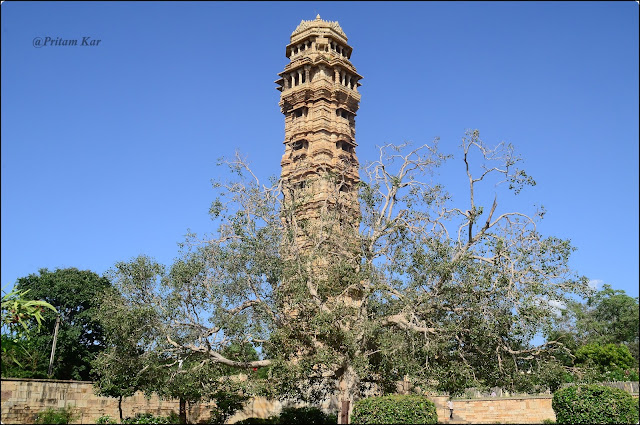Rajasthan
is full of diversity of nature, where you can find rocky hills, lakes, chilly
and hot weather and also desert. And this nature is carefully customized by
human’s thought, which resulted into some gigantic forts; the beauty of those
is enough to blow some fresh air in traveller’s heart. Chittorgarh fort is largest of them.
 |
| Chittorgarh Fort |
The fort is the appropriate example of Indian heritage,
culture and architecture. Chittorhgarh fort is only fort in the world where
“Jahar Brata “ was observed for three times and 16000 brave heart ladies killed
themselves jumping into the fire to save their self-respect. The stony beauty of the fort along with the
touch of a glorious history of Mewar is enough to occupy a page of your travel
diary.
 |
| Architecture in the Fort |
Short History of the Fort:
It was built in 7th century AD by various Mauryan rulers. Chittorgarh Fort was the capital of the Sisodia and Gahlot kings who ruled Mewar between the 8th and the 16th century. The Chittor Fort was named after Chittrangad Maurya. This fort is lucky enough to share the fame with famous Krishna devotee Meera Bai , the lady with iron heart Rani Padmini and the ultimate warrior Maharana Pratap. |
| The place of infamous Jahar Brata |
Chittorhgarh fort extends 3 km in length and 13 km in
peripheral length, covering a total area of 700 acres. There are 7 huge gates
to enter the fort-Ram pol, Laksman pol, Padal pol, Jorla Pol, Ganesh Pol,
Bhairon Pol and Hanuman Pol.
 |
| One of the gates(Pol) |
What to see in the Fort:
The fort complex comprises of numerous hindu and Jain
temples. Among them Meera Mandir is most famous which is associated with famous
Krishna devotee Meera Bai. There is huge water reservoir which known as Goumukh
Reservoir in the fort. The fort consists numerous victory towers made by Rajput
warriors. Also Rana Kumbha Palace and Rani Padmini Palace are famous here.
 |
| Kriti Stambh |
 |
| Meera Mandir |
How to reach:
Chittorgarh is 113 km away from Udaipur and 226 km from Pushkar. It actually lies between Pushkar and Udaipur. In a normal trip to Rajasthan you can visit this place when you are travelling to Udaipur from Pushkar. Or else you can just take a cab from Udaipur to reach this place.
 |
| Vijay Stambh |
Where to stay:
You can either stay at Pushkar or at Udaipur. Chittorgarh will not be the best option to stay because apart from Chittorhgarh fort there is nothing major to see in this place. Also Udaipur is only one and half hour journey from here so best option is to stay at Udaipur.
 |
| View of Chittor from Chittorhgarh Fort |
Best time to go:
We
will suggest you to avoid the season of summer to visit any places of
Rajasthan. The
appropriate
time will be from October to February.
time will be from October to February.
 |
| Rana Kumbh Palace |
This article and the snaps are contributed by:Pritam Kar
Yatrikaa
will recommend you to visit this place during your Rajasthan trip, when you
will travel to Udaipur from Pushkar. The full Rajasthan trip plan coming soon
in this page.
For more details to visit and stay contact Yatrikaa or email
us itsyatrikaa@gmail.com its or call us @ 7479322223
Experience the best travel expedition and cherish the
memories for lifetime.

















































